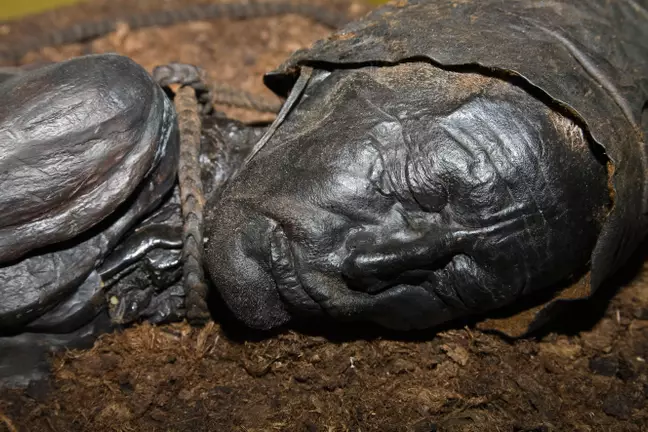Scientists conducted a remarkable examination of the Tollund Man, a 2,400-year-old body, and determined the precise contents of their last meal.
Since the discovery of the Tollund Man in a Danish bog in 1950, the enigmatic tale of this ancient individual has captured the attention of archaeologists, scientists, and a wide audience.
The preserved body of the Tollund Man, discovered with a leather cord tied around his neck, is thought to date back to the 5th century BC, a time recognized as the Pre-Roman Iron Age.
Although numerous inquiries about the Tollund Man remain unanswered even after seven decades since its unearthing, a handful of discoveries have been established by researchers.
Strangely, scientists have determined the exact components of the Tollund Man’s final meal, and prepare to be surprised – it is not what one would anticipate.
To understand how this was achieved, we must travel back 73 years to when scientists first examined the Tollund Man’s insides. They examined his well-preserved intestines, took a closer look at their contents, and promptly replaced them without much further examination.
Although the scientists examined the well-preserved grains and seeds, they neglected to study the fine fraction of the material itself.
Fast forward a few years, and advancements in technology have enabled researchers to examine the specimen in an entirely novel way.

In 2021, a study titled “The Last Meal of Tollund Man,” published by Cambridge University Press, disclosed the contents of the Tollund Man’s gut and revealed new, tangible evidence about the cause of death that has amazed archaeologists.
By analyzing plant macrofossils, pollen, non-pollen palynomorphs, steroid markers, and proteins discovered in the Tollund Man’s gut, experts could determine his last meal consumed 12-24 hours before he was killed.
As reported in the Antiquity journal, the study exposes: “He ate a porridge containing barley, pale persicaria and flax, and probably some fish.”
Hence, the fossil discovery of the final meal from the last century was simply a bowl of porridge.
“Proteins and eggs from intestinal worms indicate that he was infected with parasites,” the study adds.
What caused such astonishment was the inclusion of pale persicaria seeds in the find, as these seeds were typically discarded from the grain as a result of threshing.

While the precise details of Tollund Man’s death have remained ambiguous for decades, according to journalist Joshua Levine via Smithsonian magazine, specialists “tend to agree that [his] killing was some form of ritual sacrifice to the gods.”
The study explains: “Although the meal may reflect ordinary Iron Age fare, the inclusion of threshing waste could possibly relate to ritual practices.”
While it is still a hypothesis, the notion that the Tollund Man was the victim of a brutal religious sacrifice is broadly acknowledged.
As a result, the discovery of the seeds in the porridge may validate years of theories aimed at unraveling the Tollund Man’s cause of death.
The experts highlighted that this re-examination: “illustrates that new techniques can throw fresh light on old questions and contribute to understanding life and death in the Danish Early Iron Age.”



